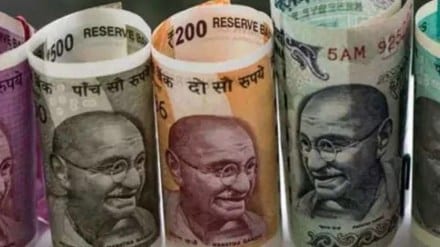By Nandini Vijayaraghavan
The data inconsistencies in the RBI’s reporting of central and state governments’ fiscal deficits since at least FY20 and high fiscal deficit, which translates to elevated government indebtedness, are causes for concern. The government of India (GoI) may reduce its incremental borrowing by investing the surplus liquidity of funds like the Universal Service Obligation Fund (USOF) and public sector undertakings (PSUs) in state-owned infrastructure financiers such as the Indian Railway Finance Corporation (IRFC), India Infrastructure Finance Company Limited (IIFCL), and National Investment and Infrastructure Fund (NIIF).
Tapping surplus PSU liquidity
The exponential growth in listed PSUs’ liquid assets is evidence of their emerging stronger from Covid-19. Liquid assets of the 26 largest listed non-financial, non-defence PSU constituents of the BSE CPSE index grew by almost 74% from Rs 1.94 lakh crore or quadrillion in FY20 to Rs 3.37 quadrillion in FY24 (figure 1). Liquid assets consist of cash, bank balances, investments, and loans. Investments comprise GoI bonds, listed equities, and mutual funds, and exclude associates and JVs.
PSUs may raise Rs 2.35 quadrillion to invest in IRFC, IIFCL, and NIIF through four transactions. First, the Rs 64,754-crore cash accumulation between FY20 and FY24 may be invested in the aforesaid financiers. Subsequently, PSUs’ cash balance will reduce to a still ample Rs 94,479 crore. Second, the Rs 1.42 quadrillion investments should be sold to public sector investors such as EPFO, banks, and insurers. Third, Power Grid Corporation’s (PGCIL) Rs 21,016 crore unsecured loans to subsidiaries is the single largest lending of the Rs 36,016 crore debt extended by the 26 PSUs.
PGCIL should refinance this debt with bank loans backed by its guarantee. Fourth, the balance Rs 15,000 crore loans are primarily employee advances. Assuming half of these loans are eligible for securitisation, PSUs will realise Rs 7,500 crore.
The Impact
GoI plans to incur Rs 15.02 quadrillion capital expenditure (budget estimate, BE) in FY25, which is sizable and essential. Capex coupled with Rs 5.80 quadrillion revenue deficit necessitates borrowing of Rs 14.73 quadrillion. If state governments’ deficits sustain their FY24 growth, i.e. 11%, and are entirely financed by debt, consolidated borrowing will be Rs 25.0 quadrillion in FY25.
Sriram Veeraraghavan, partner, Sammati Consulting & Analytics, observes, “PSUs and funds may invest their surplus liquidity in IRFC, IIFCL, and NIIF. This will reduce the GoI’s infrastructure outlay and consequently, its debt burden. Further, contributing to the nation’s development is an integral part of PSUs’ mission.” Cross holdings among PSUs are not uncommon. ONGC holds minority stakes in IOC, GAIL, and Oil India. BPCL has invested in Oil India while GAIL owns ONGC shares.
Assuming India’s GDP meets the FY25 BE of Rs 326 quadrillion, the investment of PSUs’ and USOF’s surplus liquidity in state-owned financiers will lower the FY25 combined fiscal deficit-to-GDP ratio to the pre-Covid level of 7.2% — 91 basis points lower than the 8.1% BE. Consolidated borrowings of central and state governments would be 7% lower. Cash drawdown becomes unnecessary (figure 2).
Fitch, Moody’s, and S&P observe India’s low per capita income (PCI) and elevated government debt-to-GDP constrain its sovereign rating at BBB-/Baa3. The credit rating agencies have overlooked India’s robustly growing purchasing power parity-adjusted PCI, which has outstripped China’s since 2021 and is poised to overtake that of the Philippines in $ terms by 2027. GoI should emulate Singapore and Philippines in reporting net government debt. As demonstrated in my FE column on October 22, if intra-government holdings of sovereign debt and liquid assets are deducted, FY24 net government debt-to-GDP is 61.5% — 2,470 basis points lower than the 86.2% government debt-to-GDP. GoI should also reduce incremental borrowing by financing capex with surplus PSU liquidity and fund balances to secure the long overdue upgrade in India’s sovereign ratings.
This is the second of a two-part series.
The author is CFA charter holder and analyst.
Disclaimer: Views expressed are personal and do not reflect the official position or policy of FinancialExpress.com. Reproducing this content without permission is prohibited.
\
